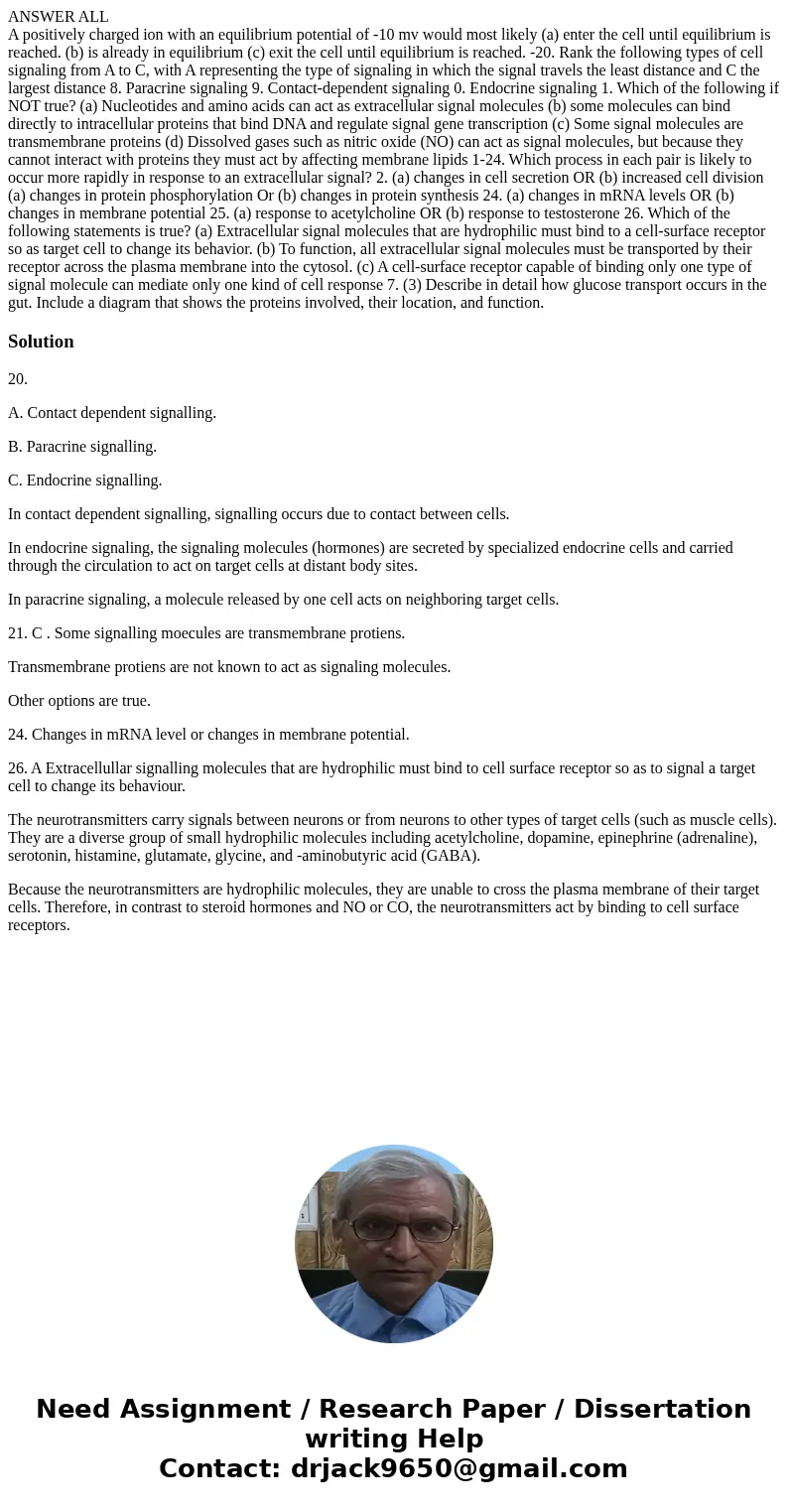ANSWER ALL
A positively charged ion with an equilibrium potential of -10 mv would most likely (a) enter the cell until equilibrium is reached. (b) is already in equilibrium (c) exit the cell until equilibrium is reached. -20. Rank the following types of cell signaling from A to C, with A representing the type of signaling in which the signal travels the least distance and C the largest distance 8. Paracrine signaling 9. Contact-dependent signaling 0. Endocrine signaling 1. Which of the following if NOT true? (a) Nucleotides and amino acids can act as extracellular signal molecules (b) some molecules can bind directly to intracellular proteins that bind DNA and regulate signal gene transcription (c) Some signal molecules are transmembrane proteins (d) Dissolved gases such as nitric oxide (NO) can act as signal molecules, but because they cannot interact with proteins they must act by affecting membrane lipids 1-24. Which process in each pair is likely to occur more rapidly in response to an extracellular signal? 2. (a) changes in cell secretion OR (b) increased cell division (a) changes in protein phosphorylation Or (b) changes in protein synthesis 24. (a) changes in mRNA levels OR (b) changes in membrane potential 25. (a) response to acetylcholine OR (b) response to testosterone 26. Which of the following statements is true? (a) Extracellular signal molecules that are hydrophilic must bind to a cell-surface receptor so as target cell to change its behavior. (b) To function, all extracellular signal molecules must be transported by their receptor across the plasma membrane into the cytosol. (c) A cell-surface receptor capable of binding only one type of signal molecule can mediate only one kind of cell response 7. (3) Describe in detail how glucose transport occurs in the gut. Include a diagram that shows the proteins involved, their location, and function.
20.
A. Contact dependent signalling.
B. Paracrine signalling.
C. Endocrine signalling.
In contact dependent signalling, signalling occurs due to contact between cells.
In endocrine signaling, the signaling molecules (hormones) are secreted by specialized endocrine cells and carried through the circulation to act on target cells at distant body sites.
In paracrine signaling, a molecule released by one cell acts on neighboring target cells.
21. C . Some signalling moecules are transmembrane protiens.
Transmembrane protiens are not known to act as signaling molecules.
Other options are true.
24. Changes in mRNA level or changes in membrane potential.
26. A Extracellullar signalling molecules that are hydrophilic must bind to cell surface receptor so as to signal a target cell to change its behaviour.
The neurotransmitters carry signals between neurons or from neurons to other types of target cells (such as muscle cells). They are a diverse group of small hydrophilic molecules including acetylcholine, dopamine, epinephrine (adrenaline), serotonin, histamine, glutamate, glycine, and -aminobutyric acid (GABA).
Because the neurotransmitters are hydrophilic molecules, they are unable to cross the plasma membrane of their target cells. Therefore, in contrast to steroid hormones and NO or CO, the neurotransmitters act by binding to cell surface receptors.

 Homework Sourse
Homework Sourse